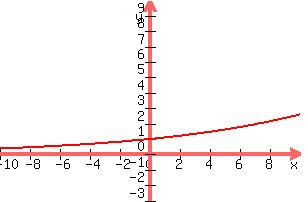Question 73986: 4) For a fixed rate, a fixed principal amount, and a fixed compounding cycle, the return is an exponential function of time. Using the formula,A=P(1+r/n)^nt , let r = 10%, P = 1, and n = 1 and give the coordinates (t, A) for the points where t = 0, 1, 2, 3, 4. Round your answer to the hundredth's place.
a) Show coordinates in this space
Show work in this space
b) Show graph here
Answer by funmath(2933)   (Show Source): (Show Source):
You can put this solution on YOUR website! 4) For a fixed rate, a fixed principal amount, and a fixed compounding cycle, the return is an exponential function of time. Using the formula,A=P(1+r/n)^nt , let r = 10%, P = 1, and n = 1 and give the coordinates (t, A) for the points where t = 0, 1, 2, 3, 4. Round your answer to the hundredth's place.
a) Show coordinates in this space
(0,1); (1,1.1); (2,1.21); (3,1.33); (4,1.46)
Show work in this space
r=.10 P=1 n=1



for t=0

 (0,1) (0,1)
for t=1

 (1,1.1) (1,1.1)
for t=2

 (2,1.21) (2,1.21)
for t=3

 (3,1.33) (3,1.33)
for t=4

 (4,1.46) (4,1.46)
:
b) Show graph here

Happy Calculating!!!!
|
|
|